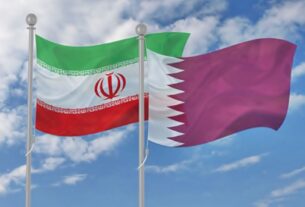Sun 28 August 2022:
The IMF and the World Bank nudged the relatively closed countries towards greater capital account liberalisation over the last few decades, sometimes pushing them using stern conditionality. Now, when higher interest rates in advanced economies are sucking capital out of developing economies, these influential International Financial Institutions (IFIs) have a responsibility to act.
While the freedom to invest wherever one wants with a click on one’s Smartphone is fascinating, it comes with a hefty macroeconomic price in the form of vulnerability it introduces into the economy. Because investors are prone to herd behaviour, negative news can trigger a race to pull out. This rush to exit “in time” – say, before stocks fall further – can turn even false alarm into a self-fulfilling prophecy.
Magic of capital and its curse in Miracle Economies
Consider East Asia, a region that benefited substantially from capital inflows in the 1990s, as countries liberalised capital accounts following IMF’s advice. Economies growing at unprecedented rates made them attractive investment spots. Investors rushed to become a part of the “East Asian Miracle”, and foreign capital flowing in helped turbo-charge businesses.
All seemed good until, when in the mid-1990s, the Federal Reserve started jacking up the interest rates to slow the American economy down and control inflation. Higher rates meant higher returns for global investors and prompted a rush of hot money from emerging economies to the US.
As global demand for dollars – for making investments in America – spiked, the Thai baht failed to maintain its pegged rate against the strengthening dollar and suffered a massive drop, reducing it to less than half of its value within six months.
With that shock, a panic about debt sustainability in the overall region kicked in and led to what economists call a sudden stop of capital inflows. The contagion spread in the region like wildfire. Many loans that would have usually been rolled over had to be paid back to anxious lenders. Resultantly, the gross domestic product (GDP) of some countries in East Asia fell by as much as double-digit percentage points, becoming sharply negative.
The IMF’s financial assistance, even though historic, was eclipsed by the quantum of capital flight, and its aggressive policy directions were criticised for worsening the panic and prolonging the crisis. Nobel laureate, Joseph Stiglitz, pointed out that these economies were not ready for such rapid decontrol of capital in the first place.
A new crisis in the making?
As many countries stand on the verge of default today, with the sovereign debt for 19 of them trading at distressed rates, the lessons from the East Asian crisis must be heeded. If the sudden reversal of capital flows caused a crash even in “miracle economies”, the less resilient countries on the brink today are much more vulnerable.
Already having limited fiscal space, the governments had to squeeze out a previously unplanned share of their budgets for COVID-19 management, vaccination drive and social safety nets. Ghana’s budget deficit, for instance, went up from 7.5 per cent of GDP in 2019 to 15.2 per cent in 2020.
On the external front, more foreign exchange was consumed in importing the same amount of food and fuel as before due to higher commodity prices, a consequence of the war in Ukraine. Lebanon, already in default, and Pakistan, which has nearly avoided a default, have experienced severe pressure on forex reserves from imports, when inflows have dried up.
Thus, in addition to their peculiar macroeconomic challenges, these countries faced the squeeze from the fiscal and international payments side due to shocks well beyond their control.
What’s worse? The Fed has been raising interest rates to mitigate inflation in the US. Investors are now pulling capital out from developing economies to get more lucrative rates in the US as the dollar strengthens; a frightening scenario reminiscent of the East Asian crisis.
In a sharp reversal of flows over the last five months, the emerging economies have seen over $38 billion worth of capital invested in bonds and shares leave. This trend is not just affecting the exchange rates, but has also made securing new loans for distressed economies much costlier.
Unfortunately, a falling currency, indomitable inflation, and the possibility of sovereign default make a Sri Lanka-like crash a real possibility in some of these distressed economies.
Are International Financial Institutions doing enough?
While the IMF and the World Bank have not been aloof from the challenges arising from COVID-19 and offered various forms of assistance (excepting the unfortunate exclusion of Afghanistan), the sister institutions do seem somewhat fatigued to face the renewed challenges arising on the macroeconomic front from the deep-settled inflation and supply bottlenecks due to the war.
When the free movement of capital, their favoured policy, is rearing its head as a significant problem for the already forex-starved economies, the IFIs seems not to be acting with the required urgency.
In a financially globalised world, investors follow the signals of IFIs and, thus, these institutions have effectively transformed into gatekeepers to global capital markets. This makes their responsibility larger than their gross assistance.
Beyond timely providing the requisite monetary cushion, the IFIs need to coordinate for the financing needs and possible restructuring of private, bilateral and multilateral debt that the distressed economies direly need, essentially living up to their raison d’être.
After all, one of the original purposes of the Bretton Woods conference – the birthplace of the IMF and the World Bank – was to ensure monetary discipline across countries and facilitate economic development in a globalised world. If the (in)stability of developing economies is being relegated to being a by-product of monetary policy choices in the rich world, the guardians of global financial architecture have much to answer for.
___________________________________________________________________________________________________________________________________________
FOLLOW INDEPENDENT PRESS:
TWITTER (CLICK HERE)
https://twitter.com/IpIndependent
FACEBOOK (CLICK HERE)
https://web.facebook.com/ipindependent
Think your friends would be interested? Share this story!





